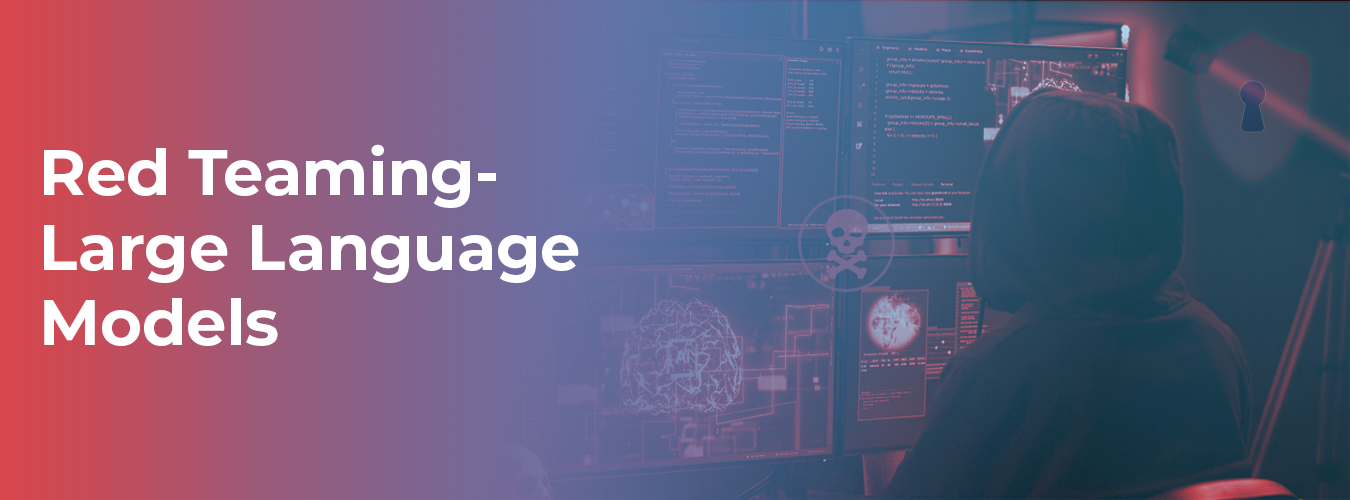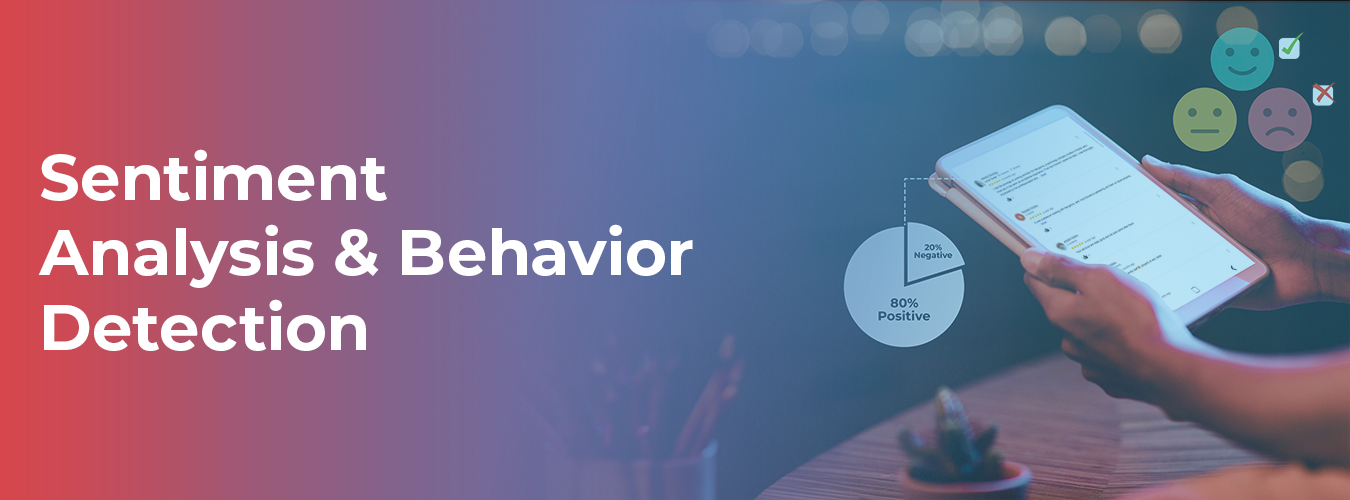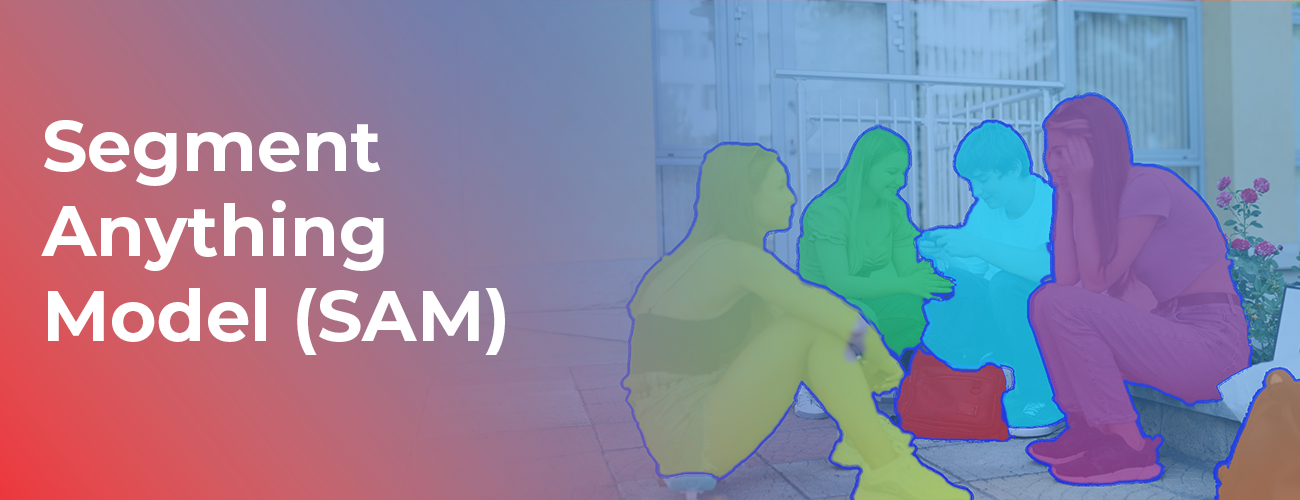Getting highly precise, driver-focused data in the ever-changing field of autonomous car technology is more critical than ever. At the center of this search is the field of video annotation services, where efficiency, creativity, and accuracy come together to drive the development of self-driving vehicle technologies. Incorporating advanced technologies like Deep Learning, Machine Learning, and Computer Vision into the video annotation process has revolutionized our understanding of data labeling by providing previously unattainable levels of precision and insights into spatial dimensions essential for self-navigating vehicles. However, this technological integration also brings a host of difficulties, chief among them being the quality of annotated data and the requirement for strict quality assurance procedures.
This article will explore the essential factors when choosing video annotation services for driver-focused data. We address a wide range of topics that highlight the significance of accuracy, quality, and innovation in this field, from analyzing the functions of Computer Vision and Machine Vision in improving annotation quality to comprehending the essential role of Natural Language Processing and the upcoming trends set to change the landscapes of video annotation. Additionally, we’ll explore the unique benefits Macgence offers in providing unmatched picture annotation services, emphasizing how their data annotation strategy stands out in supporting and growing AI activities in autonomous cars.
Critical Factors in Selecting Video Annotation Services for Driver-Focused Data
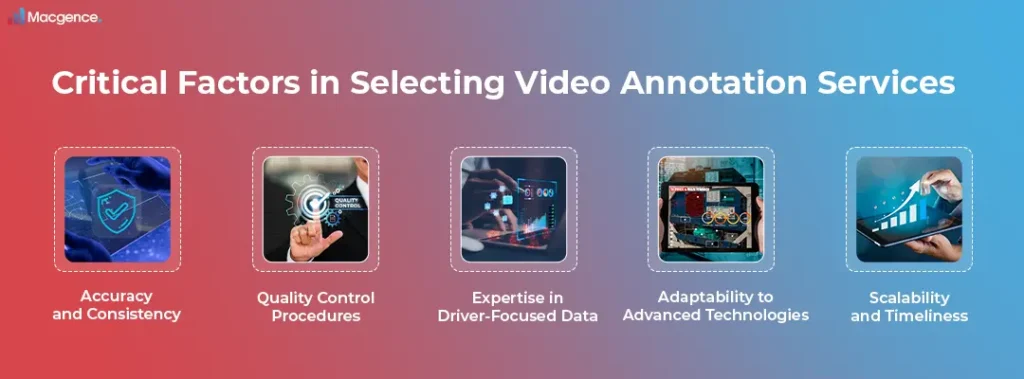
Regarding driver-focused data, video annotation services are essential; therefore, choosing one should be done carefully. One of the most critical aspects is machine learning and deep learning techniques, which have entirely changed data labeling. However, the effectiveness of these approaches is inextricably linked to the caliber of the annotated data, which emphasizes the necessity of solid quality control procedures.
Video annotation services have become an essential tool with the development of autonomous car technology. They facilitate understanding of three-dimensional objects, including size, shape, and depth. Even with the inherent complexity of annotating video data, strict quality control procedures may reduce these difficulties, boosting the accuracy of the annotated data and optimizing the performance of machine learning algorithms.
The role of video annotation services is growing as driver-focused data collecting develops. Data labeling is now more effective due to machine learning and deep learning approaches. However, the effectiveness of these methods depends on the caliber of the annotated data, highlighting the necessity of strict quality control procedures.
Role of Computer Vision in Video Annotation for Driver-Focused Data
Video annotation services heavily rely on computer vision, especially for driver-focused data. With the use of Deep Learning and Machine Learning, objects in video frames may be precisely identified and labeled thanks to this technology. The precision of this procedure is critical as it directly affects the performance of later Machine Learning algorithms, highlighting the significance of strict quality control protocols.
The growing advancements in autonomous car technology drive the need for superior video annotation services.
Deep Learning and Machine Learning provide Computer Vision’s foundation, making it easier to comprehend complicated spatial dimensions like object size, depth, and structure. Although annotating video data can be complex, these difficulties can be mitigated by strict quality assurance procedures, which will increase the accuracy of the annotated data.
The importance of video annotation services—augmented by computer vision—is growing as driver-focused data collecting advances. The data labeling process has been made more efficient by combining Deep Learning and Machine Learning approaches. Nevertheless, the quality of the annotated data determines how well these approaches work, which emphasizes the need for thorough quality assurance procedures.
Impact of Machine Vision on Video Annotation Quality
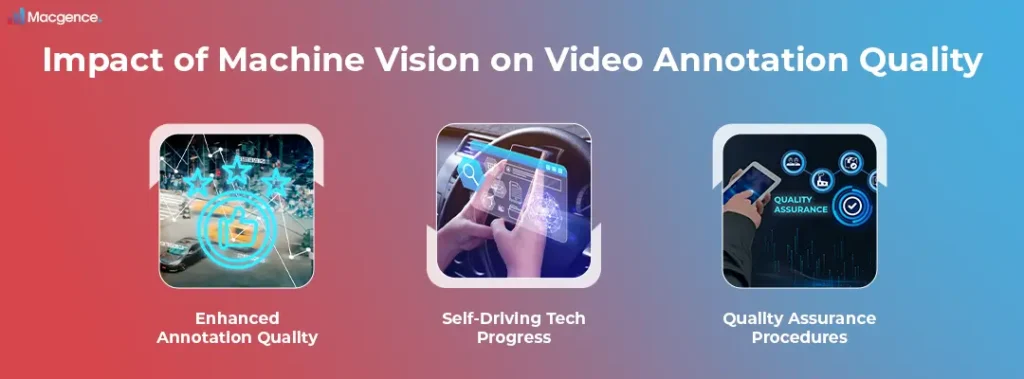
- Machine Vision’s Impact on Video Annotation Quality:
- Machine Vision profoundly affects video annotation quality, especially in autonomous vehicle technology.
- It utilizes Deep Learning and Machine Learning to detect and tag entities within video sequences.
- Precision in this operation is critical for the efficiency of subsequent Machine Learning models.
- Advancements in Self-Driving Car Technologies:
- Understanding complicated spatial dimensions like object depth and size is made easier with machine vision, aided by deep learning and machine learning.
- Quality Assurance Procedures:
- Strict quality control methods are required to guarantee that video annotations are accurate.
- Strict quality control procedures can reduce the challenges of annotating video data, increasing the annotated material’s credibility.
Importance of Natural Language Processing in Video Annotation
Natural Language Processing (NLP) plays a significant role in video annotation quality and is an essential technology in autonomous vehicles. NLP makes it easier to precisely identify and name objects in video sequences by utilizing the powers of Deep Learning and Machine Learning. The precision of this process is critical as it influences the functionality of later Machine Learning models, emphasizing the need for strict quality control procedures.
High-quality video annotation services are increasingly in demand as self-driving vehicle technologies advance. Deep learning and machine learning support natural language processing, which is essential for deciphering complicated spatial dimensions such as object size, depth, and structure. Although annotating video data might be complex, strict quality control procedures can make things easier and increase the dependability of the annotated data.
Future Trends in Video Annotation for Driver-Focused Data
Looking ahead, the landscape of video annotation is set to undergo significant transformations, particularly in the context of driver-focused data. The integration of Computer Vision with Deep Learning and Machine Learning is expected to revolutionize the process of video annotation. This fusion will enable more accurate detection and labeling of objects within video frames, thereby enhancing the quality of data available for training autonomous driving systems.
Another emerging trend in video annotation pertains to using advanced Natural Language Processing techniques. These methods, powered by Deep Learning and Machine Learning, are designed to interpret and annotate complex spatial dimensions within video data.
Lastly, the future of video annotation will witness an increased emphasis on rigorous quality control measures. Given the critical role of annotated data in Machine Learning model performance, ensuring the accuracy and reliability of annotations is paramount. Innovative quality assurance protocols, backed by Machine Learning and Deep Learning, are set to become a standard in the industry, further elevating the trustworthiness of video annotation services.
Unique Macgence Advantages in Image Annotation Services for Driver-Focused Data
Regarding driver-focused data, supplemental resources such as audio annotation services play a pivotal role. One such resource is the Macgence data collection and annotation services. With its language-independent, human-powered platform, Macgence offers AI training in any context, providing localized and globalized insights. Their AI training program, approved by a diverse crowd, simplifies handling AI training data. Catering to a wide range of organizations, Macgence’s services include field data for AI and Machine Learning project preparation, development, implementation, and deployment. Trusted by global giants, Macgence’s experience in supporting and scaling AI initiatives is unparalleled.
Conclusion:
The function of video annotation services is crucial in the rapidly changing field of autonomous vehicle technology, which links present capabilities and the autonomous automobiles of the future. The investigation highlights the essential requirement for accuracy, excellence, and creativity using Deep Learning, Machine Learning, and Computer Vision technologies. These solutions address quality assurance and data accuracy issues while opening up new autonomous navigation possibilities. In the future, combining cutting-edge methods and strict quality assurance measures should raise the bar for data annotation, which will benefit the advancement and dependability of autonomous driving systems.
The process of improving video annotation is proof of the unwavering quest for perfection in the field of autonomous cars. It heralds a revolutionary era in transportation where safety, economy, and flexibility are given priority.
FAQs
Ans: – Precise decision-making by AI is essential to the dependability and safety of driverless cars.
Ans: – They make it possible for complicated spatial dimensions and objects in video data to be automatically recognized and labeled.
Ans: – It guarantees the accuracy of the data required to train AI models, improving the efficiency and security of self-driving cars.


